|
|
First look at Nokia RX-51 also known as Nokia N900
Please note - This article is nothing but our first impressions of the device and some musings about what's going to happen. The N900 itself has reached the stage when most of its elements are operable, so we decided we could publish this lowdown. Just one more remark, had it not been for so many leaks regarding the N900 you wouldn't have seen this write-up in the first place. But alas, Nokia have failed to keep their main 2009 announcement in secret, so here we go.

Positioning
If you are not a frequent reader of Mobile-Review.com you might ask how come Nokia decided to put aside its favorite S60 platform and switch to Maemo, which is all another way of saying that they ditched S60 for Linux OS. As most of you know, until recently Maemo has been used exclusively in pair with Internet Tablets.
The rise of Internet Tablets
Our avid readers probably already know the Maemo's inner history from the variety of related materials. But still I will remind you in brief why this decision was made. Remember, the first info and details on a Meamo-based smartphone were leaked by yours truly and then all of it got available on other sources. It has become a common knowledge that Nokia had a "secret" weapon under their belt. But what it is for? Let’s find out together.
At present there are several handset platforms in Nokia’s arsenal – the S30 for low-end phones, the S40 for mid- and top-range and the S60 for smartphones priced ˆ200 and higher. If we take into account also codenames used strictly within the company we will get a few more platforms, but they are of no importance to us, so let’s deal with names familiar to common users.
Taking into account the growing smartphone market and transformation of ordinary phones into feature-rick monsters most phone makers realize the necessity of having a flexible and open platform, which will help creating true mobile powerhouses. The S60 used to be such a platform for Nokia up until 2007. Back then Microsoft didn’t have the ability to create a mobile version for its OS, or to promote it and expand its market share. In 2009 it resulted in the following: the company made an unspoken decision to tweak Windows Mobile 7 and then try to migrate to a more "mature" OS. That is, they decided to ditch the idea of a mobile version, keep Windows CE and promote the next Windows 7.5/8 version (scheduled for release in 2012) for mobile platforms . Currently the development of Windows Mobile family is either stopped or frozen. And there is certain logic in there – because of their failure in the past the company won’t risk to invest more resources into this OS today. Besides, the market is going in the same direction.
For example, Apple managed to adapt BSD for their Apple iPhone, plus it's also utilized in their multimedia players and will debut in an internet tablet some time in 2011. The vertical OS paradigm implies that this system may be used not only in touch-sensitive devices, but also in those that don't have this feature.
Since Samsung didn't have clear-cut favorites in terms of platforms back in 2007, they opted to invest substantial amounts of money into a whole bunch of operating systems. At the same time strategy-wise they had no doubts that mobile devices in 2010 would become convergent devices. For the time being the company doesn’t have vertically oriented products, but they will come up with them in the near future, much like Nokia, Apple and Google. Each is moving towards this market in its own unique way - for instance, Apple started their journey with an OS, a bunch of devices and some help from the developers community. Over at Google they are working on their Android OS step-by-step in order to flood the market with a wide selection of phones during the second stage of their strategy (which will take place in 2010) and start offering Google-branded laptops during the third stage (2012-2013). And even though first MID Android-based devices are already available, this market will start blossoming only in 2011, along with the advent of first laptops.
After this lengthy digression on how things stand today, a natural question comes up:how come the S60 platform has been put aside? It seems to be almost the ideal platform for mobile devices, as it was simply design for this purpose. But that’s exactly the weak and strong point about the S60 at the same time. The market will require vertical OS, which can be applied in cell phones, communicators, laptops and MID devices, i.e. various device types with different architectures, performance levels and so on. And suddenly it becomes apparent that S60 is not up to the task - the only way it can be tailored for the company's current needs is through a total reconstruction. Had Nokia had an army of developers, plenty of appsand related services for its S60, they would have to center everything around S60. Thankfully (or not!) there is a modest number of developers, programs and software for the S60. In other words, the resources they command are sufficient, but not excessive. The company is willingly sacrificing them, keeping both S60 and Maemo in the service boat at the same time. In addition all key SDK will need to have the ability to work with Maemo in future, allowing developers to migrate to this platform and attract new ones. In fact even Apple developers get an opportunity to create programs for Nokia’s platform in a quick and easy-to-learn fashion, which is definitely a huge advantage.
The creation of Symbian Foundation took place when Nokia made its final strategic decision. They market called for vertal solutions and they responded with Maemo. But why are they going to give their own S60 away? It's simple: they can't afford to support two major platforms at a time, so S60 will be fueled by the resources of other companies united in Symbian Foundation. Samsung is viewed as the potential driving force for the Foundation, as their motivation to roll out competitive S60-powered devices seems unqestionable on the surface. However Samsung have managed to see things through, and are now working on a vertical Linux-based solution of their own, using their proprietary TouchWiz interface to tie up various platforms and prepare themselves for the upcoming Linux-powered devices. The lastdevice from Samsung that can be called their S60 is the i8910 HD - all other phones will be moved to the mid-tier, where Samsung will mimick Nokia's strategy and increase their market share through penetration of lower price segments. In the next 18 months Samsung, Sony Ericsson and other phone makers will sell 40 out of 170 million all smartphones.
And in these circumstances the S60 platform will be driven by only one factor - price. By autumn of 2010 most phones will become significantly cheaper, as Maemo-based flagship devices will take the center stage, rivaled by Sony Ericsson's S60 smartphones, making it the only vendor fighting for a piece of the smartphone market with S60. The fact of the matter is that they don't have the resources to develop an own Linux-based solution, although the truth is they are negotiating with some players, in an effort to find a compromise and come up with a vertical OS of their own. Without much luck, though.
This situation leaves a huge time lag that will work to Nokia's Maemo smartphones advantage. In fact, only Nokia and Apple will have similar solutions in 2010-2012 that will enable them to beef up their shares in this segment. While Samsung have almost let their chance slip, through various marketing moves they'll probably manage to mitigate the negative consequences. Already today widgets are spreading not only among mobile phones, but also netbooks and this integration of UI will go even further, but it's still not a scalable vertical OS. LG, in turn, don't stand a chance on this field - they haven't fully grasped where the market is headed and the outlines of the industry's future still appear vague to them. Sony Ericsson are going through a tough period in their history, having wasted two years of priceless time and the re-organization initiated by the new management will take another year, so they won't be able to get back in business until mid 2010, with first results expected only in 2011-2012, when Google, Nokia and Apple will have the market covered. For the first time the companies integrate services, software and devices in a vertical line, so technically we can call this market vertical. That’s the main distinction from the past, the paradigm is changing these days. The market lines up in a vertical, various devices get tied together by one single OS and differ only in terms of specs and size.
I hope this sort of "brief" story has shed some light on why Nokia are running with Linux/Maemo as their future OS. Now let's talk a bit about the N900/RX-51's positioning (the latter index was used during the phone's development, intended for internal use).
December 2008, Barcelona – the company introduced the term “computer” and tacked it to the Nokia N97. They showed us the concept and the way they will the future of this industry, making the N97 the last S60 flagship in their range. So what does that mean? The N97 will stick around for a year and then its place will be taken by the N900. However from the technical standpoint, it doesn't differ from the N97 at all, so why bother releasing it in the first place? Probably, over at Nokia they are up to something bigger. Like, they want to show the market their brand new OS.
This family is expected to blossom in 2011, and for now sporadic announcements will have to do. At this point in time, though, Nokia won't ditch S60, though, so they'll keep churning out both S60- and Maemo-based phones. And while an ordinary consumer might get a headache because of this variety, those who'll try the RX-51 or the likes one won't have to think twice about which OS to go for ever again. Now, on to what this review is all about...
Design
The N900 is housed in the side-slider form-factor, although it doesn't boast an N97-esque opening mechanism. All in all, the phone's build quality is on par with that of the Nokia E75.








The N900's camera is no different from that found in the Nokia N97, plus it comes equipped with a lens shutter (so far it has managed to keep the lens clean). The camera interface here is the only feature carried over from S60.





The microSD slot (hot-swappable) is hidden under the rear panel and supports memory cards up to 32 GB. The handset carries a standard 1320 mAh battery onboard. However in practice it proves to be more power-hungry than the N97. At the same time, they aren't much different in terms of standby times, but don't forget we got our hands on a proto, not the final version of the phone.

The smartphone is built on ARM Cortex-A8 CPU and carries 32GB of internal memory onboard, as for the rest specs, we'll keep them to ourselves untill the announcement date.


There is the microUSB jack (plus the N900 can recharge over USB) and TV-out. I guess that'll be it - after all, its design is not the N900's key feature.








Maemo
The RX-51 is run by Fremantle. I know this name won't say anything to most of you, but for simplicity sake, let’s say this is the next version of Maemo and it differs dramatically from what we saw on the Nokia N810. Havea look at the screenshots below - they are way more informative:



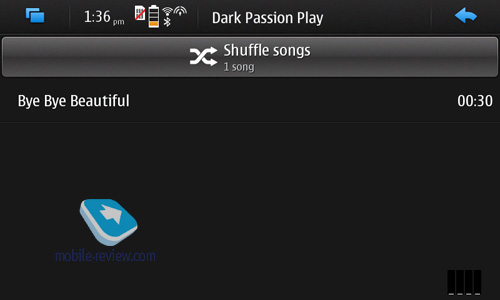

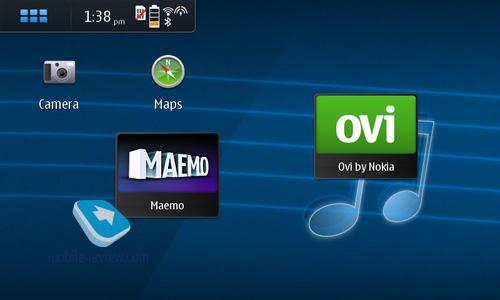
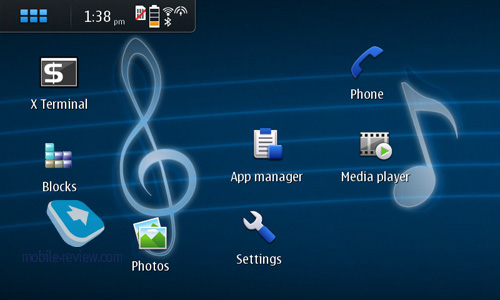
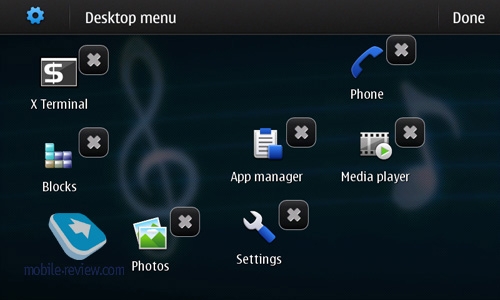
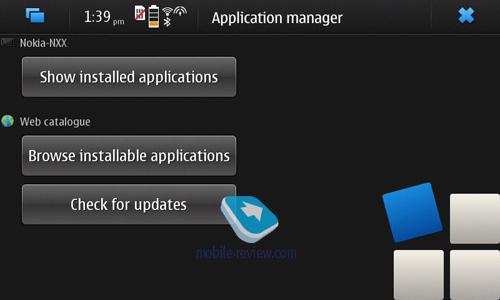










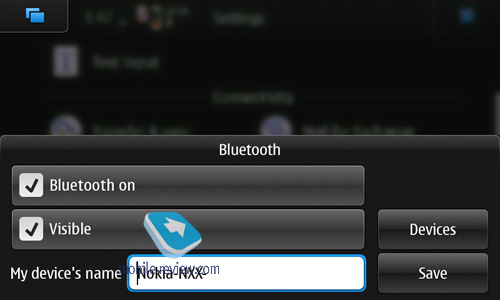
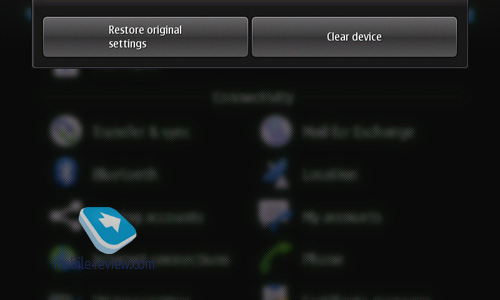
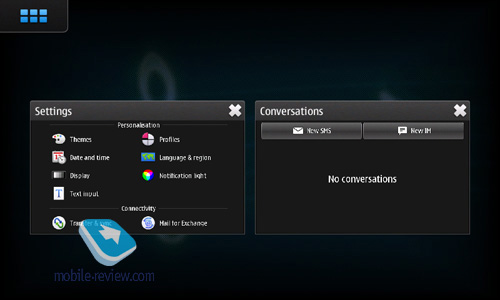



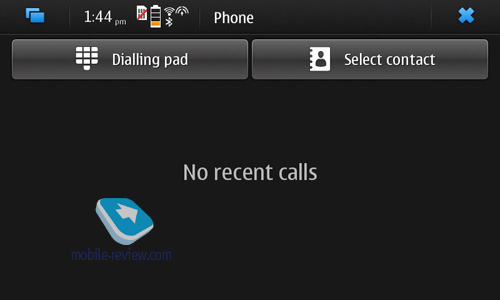
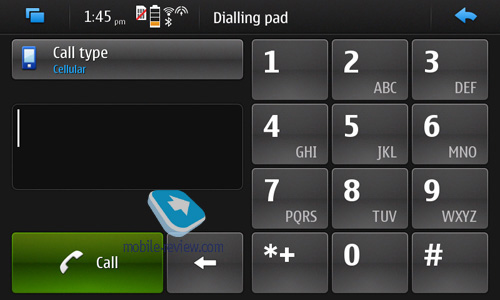

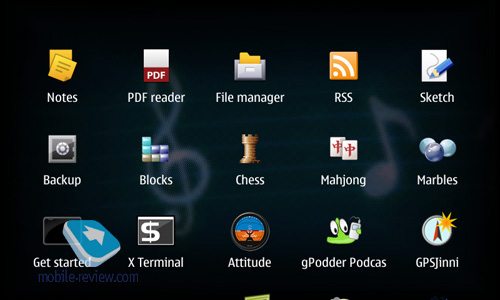
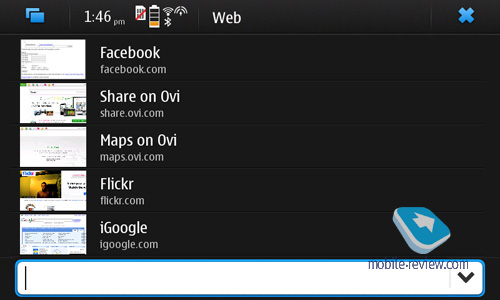
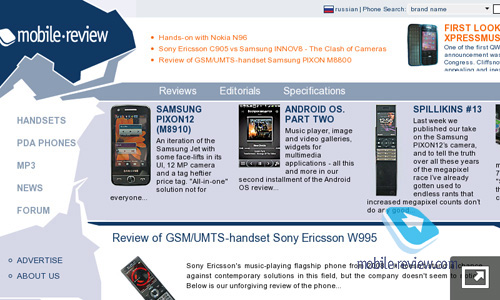
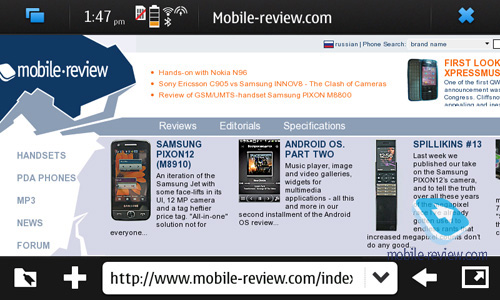
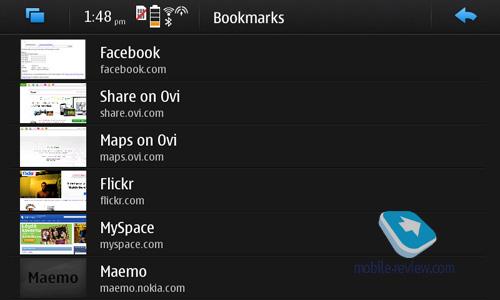
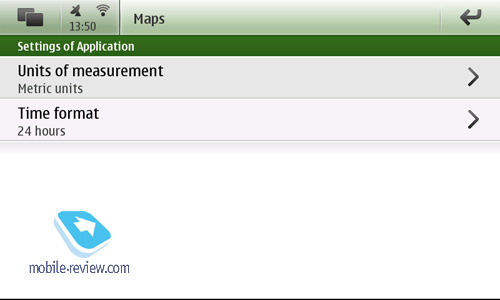

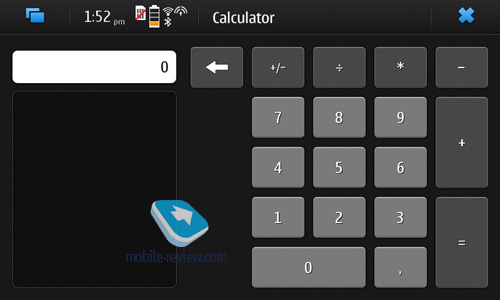
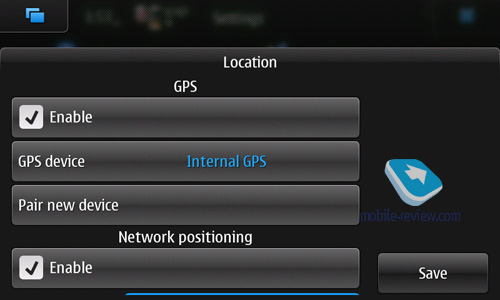
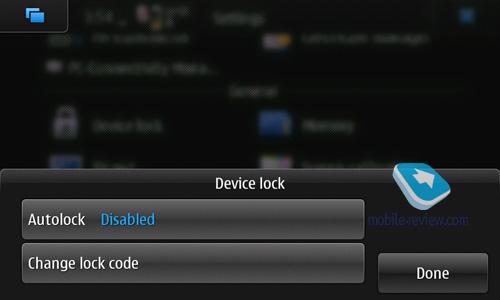
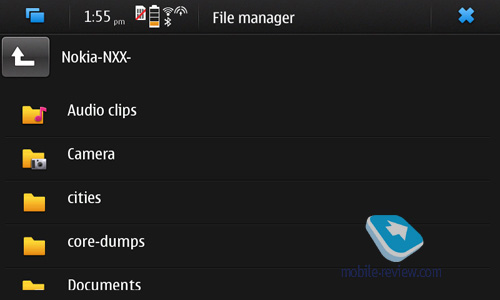
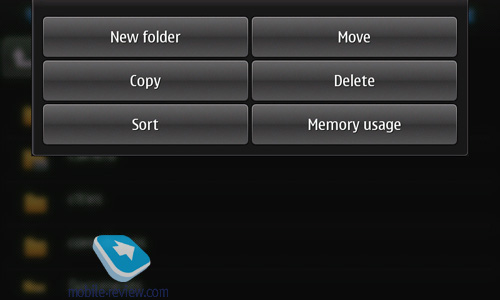
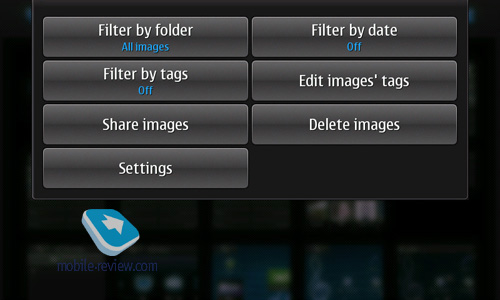
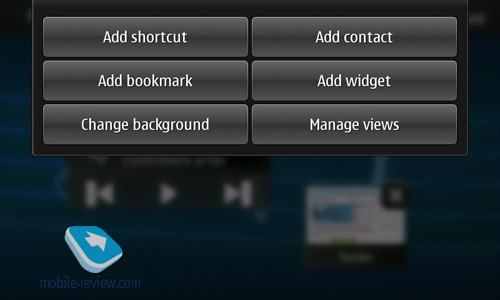
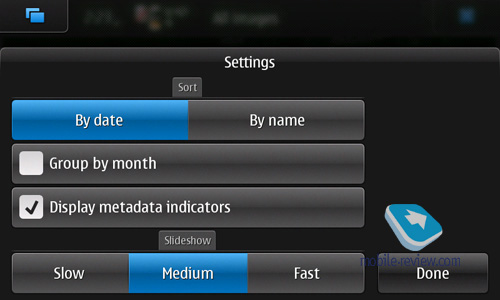
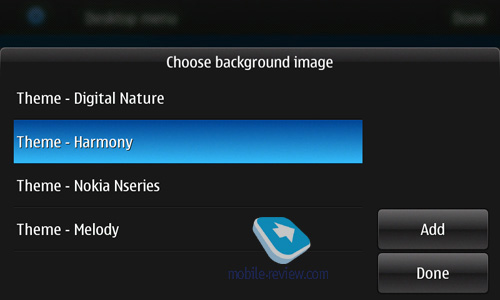
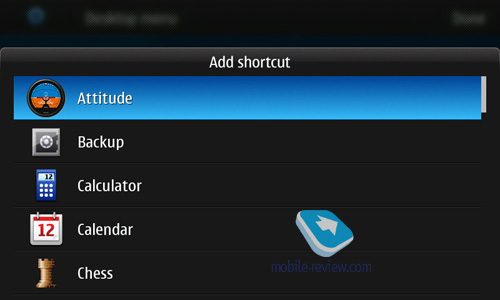
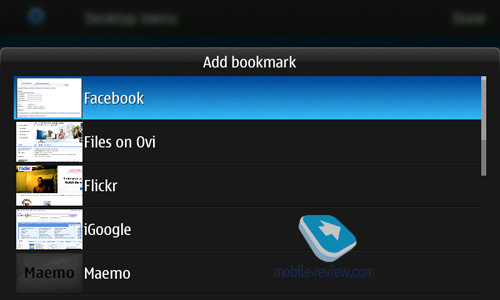
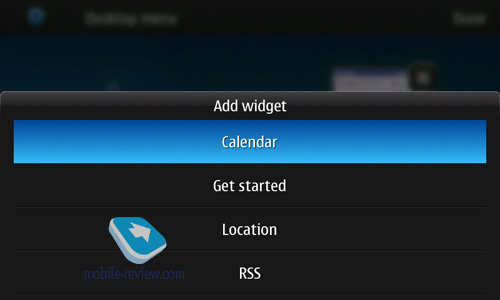
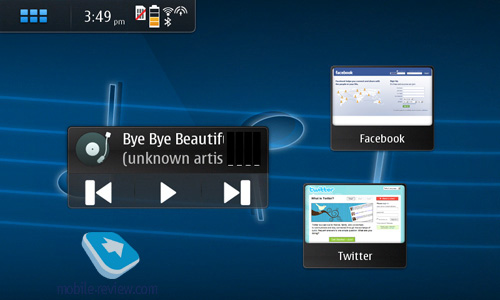
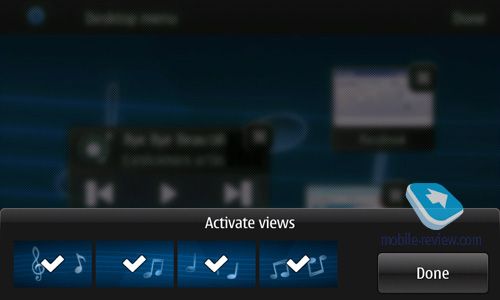

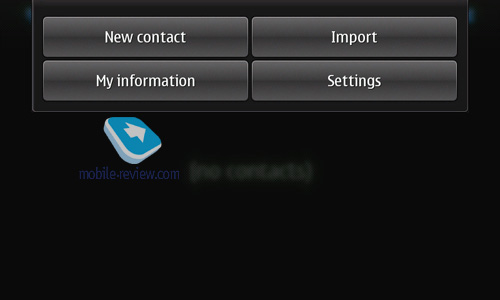
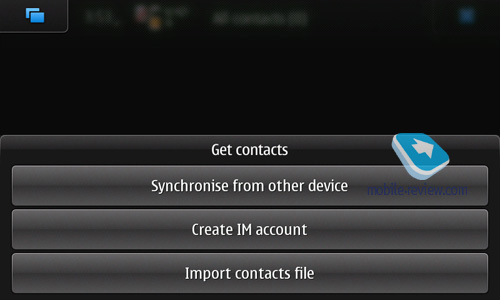
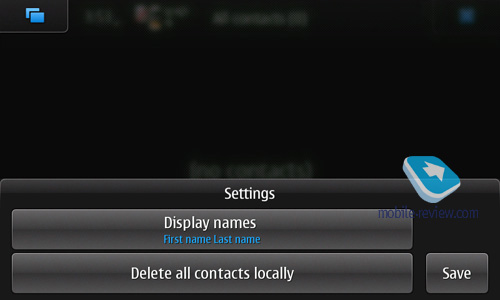
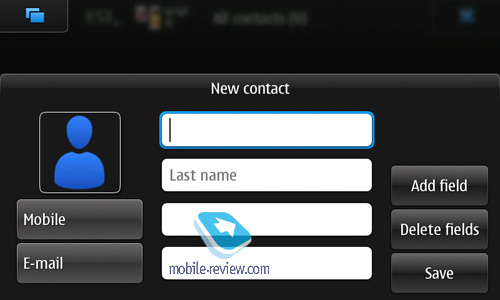
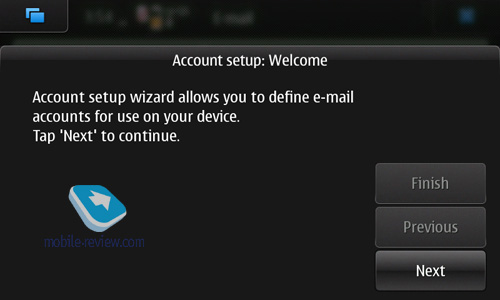

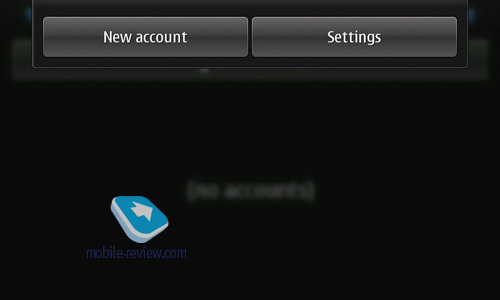
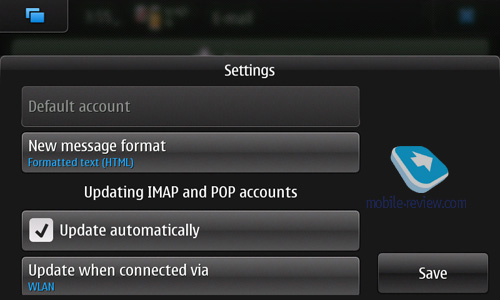
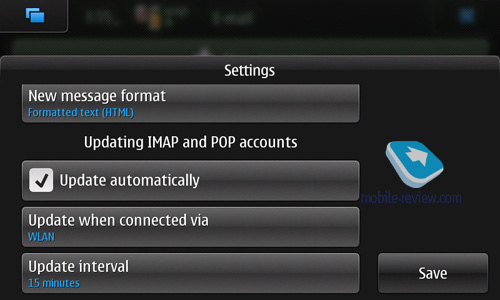
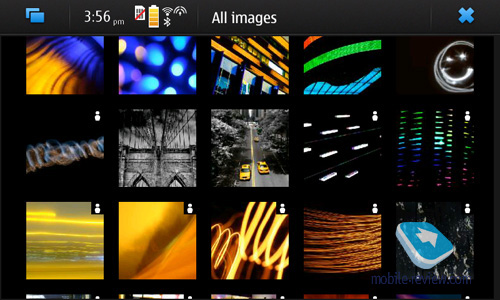
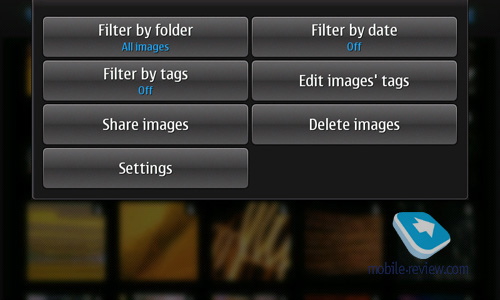
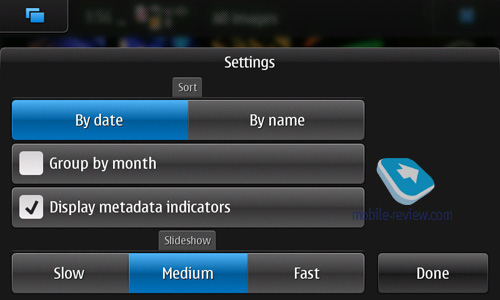

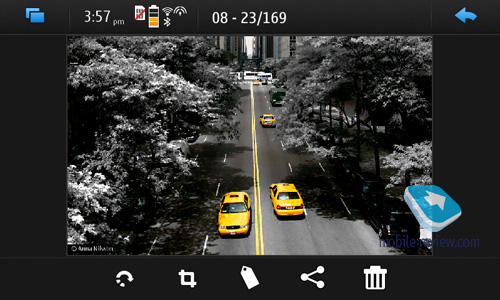

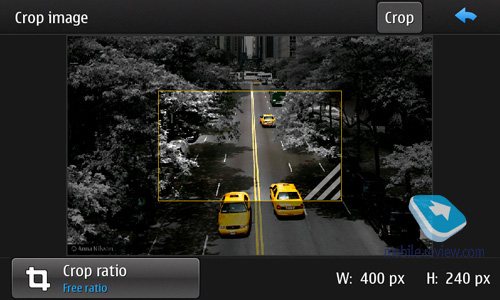

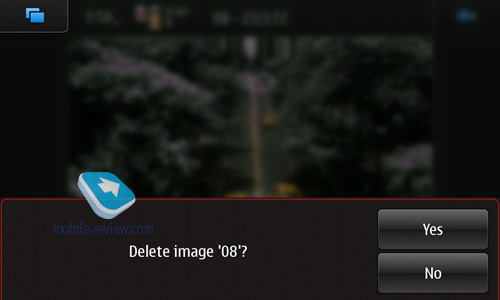
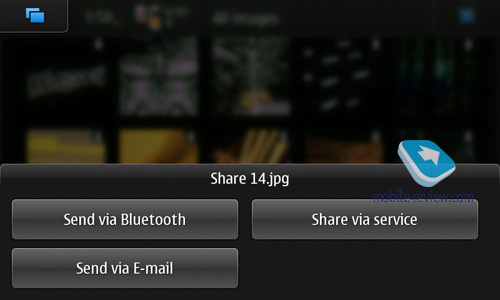
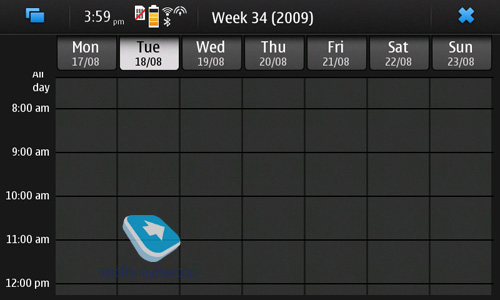
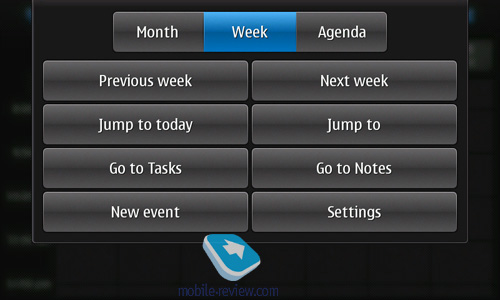
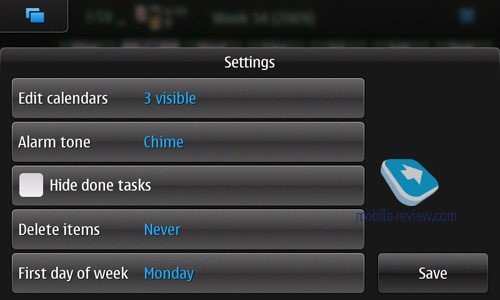

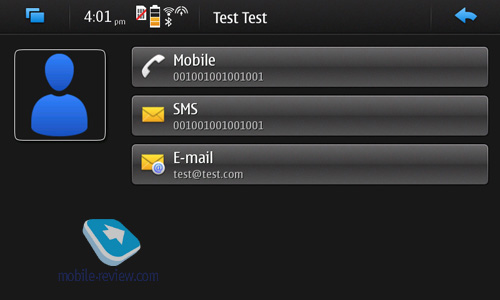
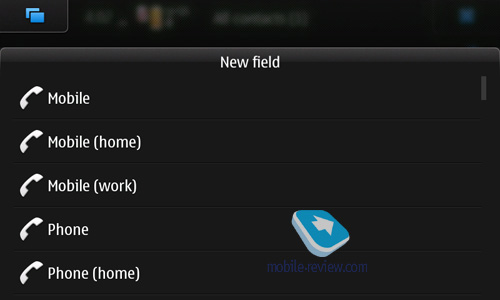
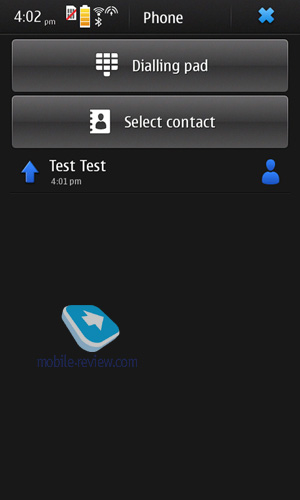
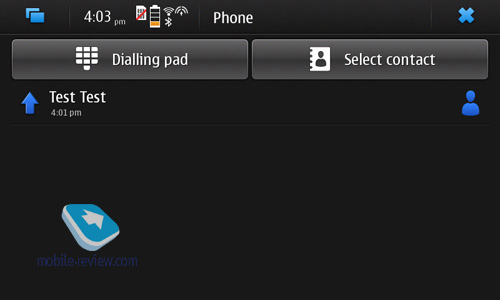
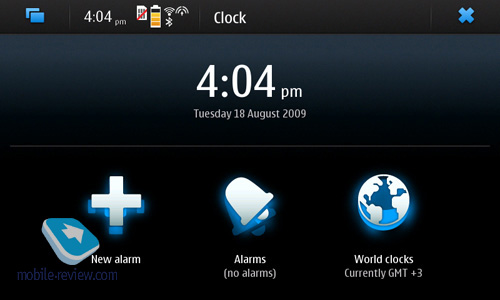
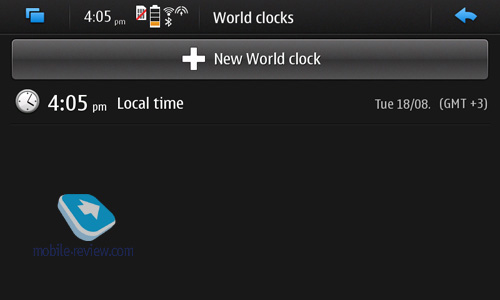
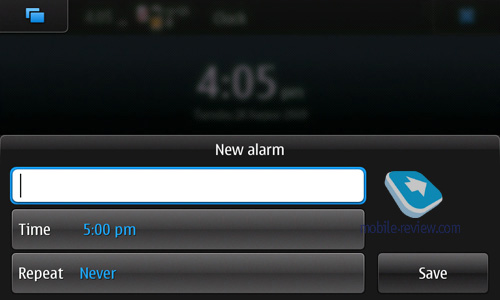
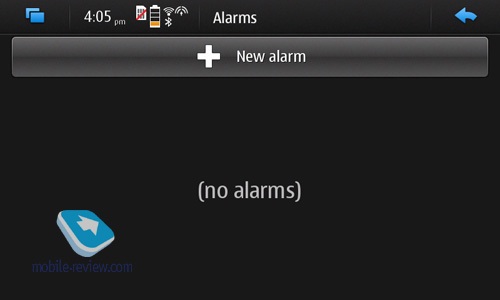
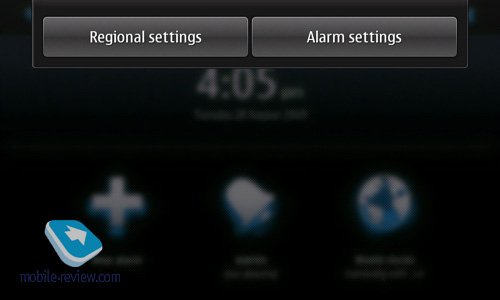
Impressions
I would say what's going to follow are my personal impressions of the device plus opinios of my family and several people who also had a chance to play around with the N900. Compared to S60, the N900's boot time is much faster, and also take into account the fact that we played around only with its prototype, so we were prepared for occasional reboots during our quality time with it. This is something Nokia will have to work on, and I hope they'll fix this issue in the final version of the device. Other than that, I was more than happy with how the N900 performed.
Due to variety of visual effects, smooth transitions and decent reaction time of the touch screen (which is a significant improvement over the Nokia N97), the N900 feels more like the Apple iPhone. At the same time its UI looks nothing like that of the iPhone - it's just different, but eye-candy nonetheless (maybe somewhat similar to HTC's products). Everyone who had a chance to play with it noted that it didn't look like any other Nokia-branded device, yet it was an enjoyable experience overall.
Even the browser is pretty stable, and it supports flash, video and applets. On top of that there is partial compatibility with older applications, some things work and some don't. But in general most apps did start up on the N900, yet some of them required libraries our device didn't have.
Those who are familiar with Diablo (Maemo 4.2) will feel right at home with the N900: same on-screen keyboards (despite the phone having a hardware one) and it’s considerably easier to switch input languages than in S60-powered devices. All in all, not much has changed, it even sports the same memory setup. The phone’s 800x480 pixel resistive screen (pretty responsive, by the way) is great for watching videos and the kickstand mounted on the N900 only helps the experience. Perhaps they’ll decide to throw in an extra stylus into the box (since the N900 already comes with one built into its casing), much like the one that came with the Nokia N97.
I’m frequently asked the question whether it’s possible to list through the interface in Fremantle? Honestly, though, I don’t quite get it, but all pages containing a significant number of items (more than one screen can accommodate) can be listed through. Copy/pasting text fragments is allowed in all menus.
The phone’s GPS department seemed well-tuned too – its cold start time didn’t exceed a couple of minutes and the accuracy was comparable to the Nokia N97. The N900 also comes will all utilities for tapping into Twitter and Facebook right out of the box. Its media player can deal with non-converted videos (although we did run it with additional codecs, which aren’t guaranteed to make it to the final version of the device). I hope over a hundred of the UI screenshots will give you a decent impression of what the N900 is and how it differs from S60. More airy I’d say.
And the last thing I almost forgot to mention – all context menus are made in the form of pop-ups which are easy to dismiss. All you need to do is press on any area of the screen outside the menu and it’ll be closed in an instant. Also I like how the task manager is implemented. On top of that, you can setup the home screen however you like using various themes and widgets.
I thought it wouldn't make much sense to go through all features of the phone just yet - I'm not lazy, I just have to leave some bread for Nokia's announcement guys! So, come back after the official release for more - we'll talk more about all feats and tricks the N900 has got under its hood. But what I can say for now is that it's the true mobile powerhouse in every sense of this word, that comes wrapped in a very eye-candy and functional UI at that. It won't become a hit, but at the same time the N900 is a milestone both for Nokia and the industry that won't just go unnoticed. The phone is supposed to hit the shelves late in 2009 and will go for 550 Euro (the price, however is subject to change).
Related links
Eldar Murtazin (eldar@mobile-review.com)
Translated by Anna Rychkova (oleg.kononosov@mobile-review.com)
Published — 20 August 2009
Have something to add?! Write us... eldar@mobile-review.com
|
News:
[ 31-07 16:21 ]Sir Jony Ive: Apple Isn't In It For The Money
[ 31-07 13:34 ]Video: Nokia Designer Interviews
[ 31-07 13:10 ]RIM To Layoff 3,000 More Employees
[ 30-07 20:59 ]Video: iPhone 5 Housing Shown Off
[ 30-07 19:12 ]Android Fortunes Decline In U.S.
[ 25-07 16:18 ]Why Apple Is Suing Samsung?
[ 25-07 15:53 ]A Few Choice Quotes About Apple ... By Samsung
[ 23-07 20:25 ]Russian iOS Hacker Calls It A Day
[ 23-07 17:40 ]Video: It's Still Not Out, But Galaxy Note 10.1 Gets An Ad
[ 19-07 19:10 ]Another Loss For Nokia: $1 Billion Down In Q2
[ 19-07 17:22 ]British Judge Orders Apple To Run Ads Saying Samsung Did Not Copy Them
[ 19-07 16:57 ]iPhone 5 To Feature Nano-SIM Cards
[ 18-07 14:20 ]What The iPad Could Have Looked Like ...
[ 18-07 13:25 ]App Store Hack Is Still Going Strong Despite Apple's Best Efforts
[ 13-07 12:34 ]Infographic: The (Hypothetical) Sale Of RIM
[ 13-07 11:10 ]Video: iPhone Hacker Makes In-App Purchases Free
[ 12-07 19:50 ]iPhone 5 Images Leak Again
[ 12-07 17:51 ]Android Takes 50%+ Of U.S. And Europe
[ 11-07 16:02 ]Apple Involved In 60% Of Patent Suits
[ 11-07 13:14 ]Video: Kindle Fire Gets A Jelly Bean
Subscribe
|











































































































